Aloe vera is often considered for its medicinal qualities, but it is also a beautiful drought-tolerant plant that makes a great garden addition. Spikes of yellow flowers irresistible to hummingbirds herald the arrival of spring. In addition to its striking flowers, aloe vera needs only deep, infrequent watering and requires no fertilizer. It can be grown outdoors all year long in USDA zones 9 to 11 or can be brought inside during the winter in cooler climates.
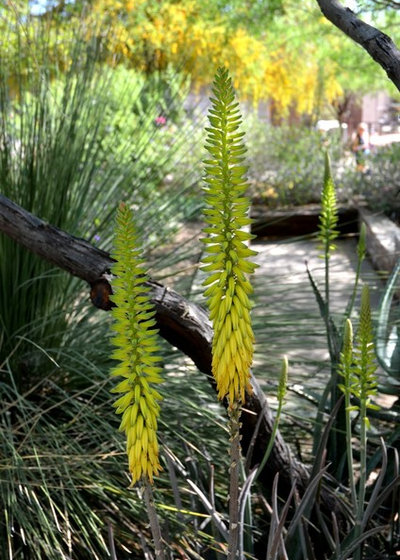
Noelle Johnson Landscape Consulting
Botanical name:
Aloe vera (syn.
Aloe barbadensis)
Common names: Aloe vera, medicinal aloe
Origin: Native to the Mediterranean and Africa
Where it will grow: Hardy to 25 degrees Fahrenheit (USDA zone 9; find your zone) when grown outdoors all year
Water requirement: Drought tolerant once established but does best when watered deeply twice a month in summer and once a month in winter; water weekly in summer in desert climates
Light requirement: Full sun to filtered shade, but avoid areas that receive afternoon sun
Mature size: Grows 1 foot to 2 feet tall and 3 feet wide or more; flowering spikes are 2 to 3 feet tall
Benefits and tolerances: Drought tolerant; attracts hummingbirds
Seasonal interest: Flowers from late winter into spring; succulent leaves
When to plant: Fall or spring from offsets or transplants
Shown: Aloe vera growing at the Desert Botanical Garden in Phoenix
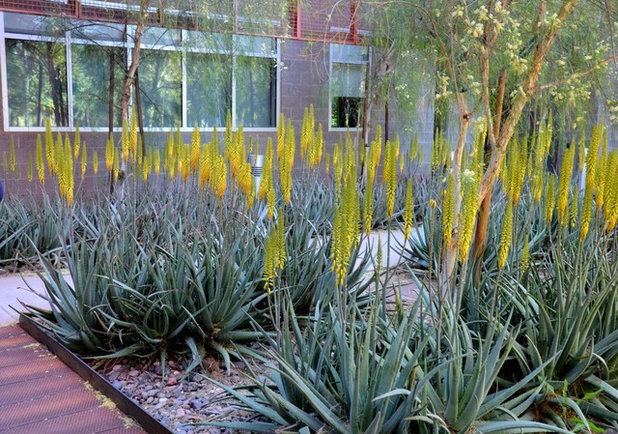
Noelle Johnson Landscape Consulting
Distinguishing traits. In spring, 2- to 3-foot-tall spikes of tubular yellow flowers take center stage as they are borne aloft on fleshy, succulent leaves. The flowers beckon hummingbirds, who delight in the nectar.
The succulent leaves of this aloe species are 1 foot to 2 feet long and are edged with soft spines. The gray-green leaves add a visually cooling element to the landscape, while their shape adds spiky texture. The gel-like substance within the leaves is often touted for its ability to treat burns.
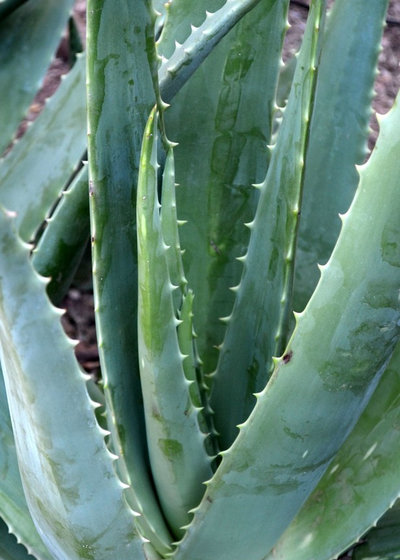
Noelle Johnson Landscape Consulting
Aloe vera is equally at home in containers, raised planters and the ground. While it does great outdoors all year long in zones with mild winters, it’s also a popular houseplant. In zones 8 and below, grow aloe vera in containers so it can easily be brought indoors when cold weather arrives.
Aloe vera produces offsets as it grows, which gradually expand the original clump of aloes. These offsets can be removed by division and replanted elsewhere or given to friends and neighbors.
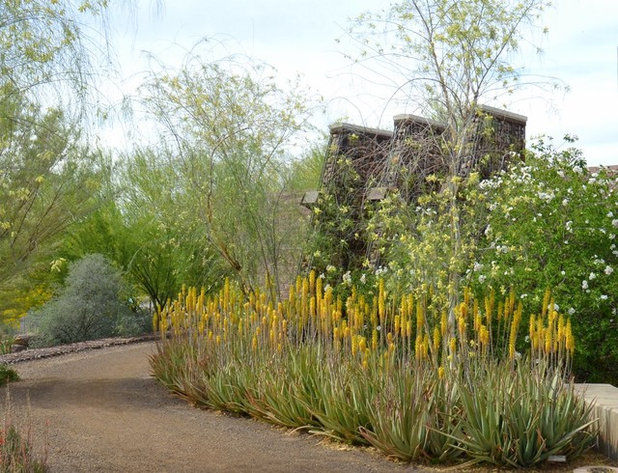
Noelle Johnson Landscape Consulting
How to use it. Aloe vera is extremely versatile in the landscape, and its succulent leaves make it a natural addition to a drought-tolerant garden.
- Create great color contrast by planting it in a blue container, where the yellow flowers will pop against the blue.
- For a contemporary feel, plant it in rows underneath a window or up in a raised bed.
- For an attractive, natural look with maximum impact, group three to five aloe vera plants along winding pathways.
- Plant it in the filtered shade provided by cascalote (Caesalpinia cacalaco), mesquite (Prosopis spp), palo blanco (Acacia willardiana) or palo verde (Parkinsonia x ‘Desert Museum’) trees.
Shown: A clump of aloe vera growing along the pathway at the Scottsdale Xeriscape Garden
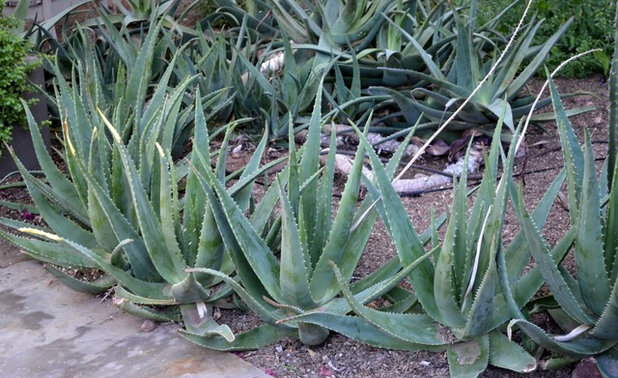
Noelle Johnson Landscape Consulting
Planting notes. Like most aloes, aloe vera isn’t fussy and doesn’t need fertilizer. When planting it in containers, use a planting mix that is formulated for succulents.
It does require well-drained soil and an area with full to filtered sun. Avoid planting it where it will get hot, reflected heat. In desert areas, avoid full sun, or its leaves may yellow and shrivel. If you grow it indoors, place the container near a sunny window but out of direct sunlight.
More:3 Steps to Creating Quick, Easy and Colorful Succulent Containers
Great Plants for Lush, Low-Water Gardens





